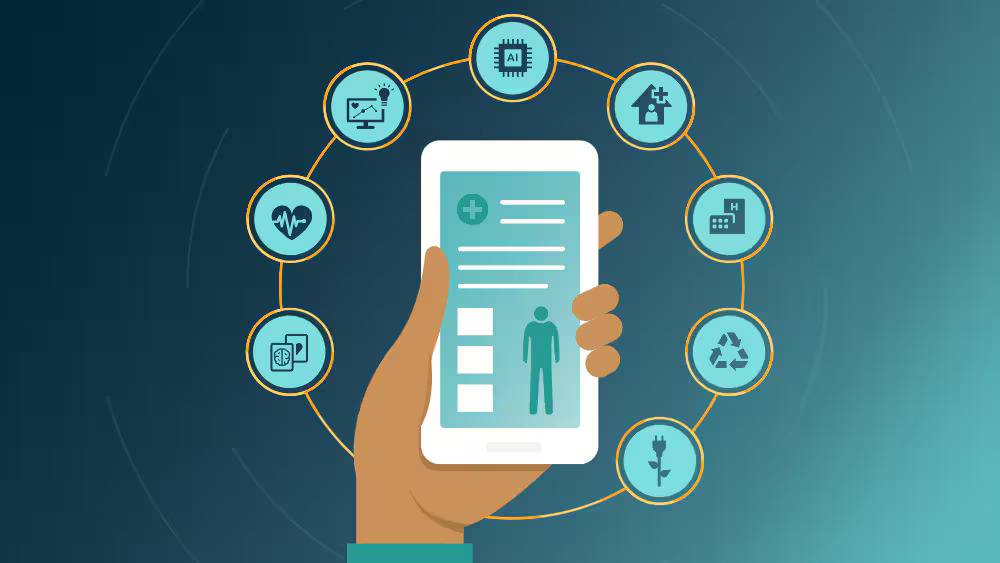The healthcare industry is undergoing a technological transformation, and one of the areas benefiting most from innovation is e-prescription software. While electronic prescriptions have already replaced handwritten scripts in many hospitals and clinics, the integration of artificial intelligence (AI) is taking things to an entirely new level. E-prescription systems are evolving into smart platforms capable of personalized recommendations, predictive analysis, and real-time decision support. Let’s explore the top 10 AI-powered features that are set to revolutionize e-prescription software in the near future.
Predictive Drug Recommendations for Personalized Treatment
AI enables e-prescription software to analyze patient data such as age, weight, medical history, allergies, and current medications and predict the most effective drugs for an individual’s condition. Unlike traditional systems that rely on physician input alone, AI models suggest drugs that statistically perform better for patients with similar health profiles. This predictive approach not only improves treatment accuracy but also reduces the time spent on trial-and-error prescribing.
Enhanced Drug Interaction Alerts Using Machine Learning
Traditional e-prescribing platforms provide basic alerts for drug interactions. However, AI takes this feature further by using machine learning algorithms to continuously analyze vast clinical datasets. These systems can identify rare or unexpected interactions that would typically go unnoticed. In real-time, they alert physicians about possible negative effects and suggest alternative medications based on patterns derived from real patient outcomes, leading to safer prescriptions.
Intelligent Dosage Customization
AI-driven e-prescription software can determine the optimal dosage of medications based on various individual factors, such as the patient’s organ function, lab test results, and metabolic rate. This feature is especially important for elderly patients, those with chronic conditions, or individuals taking multiple medications. Instead of standard dosages, prescriptions are tailored to the patient, reducing the likelihood of adverse drug reactions and enhancing therapeutic effectiveness.
Voice-to-Prescription Technology Powered by NLP
Natural Language Processing (NLP), a subset of AI, is transforming how prescriptions are generated. With this feature, physicians can simply speak their prescription aloud, and the software will convert the speech into an accurate, structured digital prescription. Over time, the AI adapts to the doctor’s speaking style, preferred medications, and specialties, thereby streamlining the prescription process while eliminating manual data entry errors.
Real-Time Clinical Decision Support
AI is enhancing Clinical Decision Support (CDS) systems within e-prescription software by offering real-time suggestions based on current medical guidelines and patient-specific data. For example, if a physician selects a medication that has recently been flagged in updated treatment protocols, the AI system will notify the provider immediately. It can also suggest non-pharmacological treatments or more cost-effective drug options, helping ensure that patient care is both efficient and evidence-based.
Automated Prior Authorization Processing
Getting prior authorization from insurance providers is often a tedious and time-consuming process. AI simplifies this by automatically collecting the necessary information from the electronic health record and submitting it to the payer system in the correct format. This automation reduces the administrative burden on providers and shortens the time patients have to wait to access essential medications. In the long run, it contributes to better patient satisfaction and continuity of care.
Detection of Prescription Fraud and Misuse
AI systems can help identify patterns that may indicate fraudulent prescribing or misuse of medications. By analyzing trends such as repeated early refills, high-volume controlled substance prescriptions, or prescriptions across multiple providers, the software can flag suspicious activity. This feature is vital in the ongoing fight against opioid abuse and medication diversion, allowing healthcare institutions to intervene early and prevent legal or ethical complications.
Integration with Wearable Devices for Dynamic Prescribing
The future of e-prescription software lies in its ability to interact with real-time health data collected from wearable devices. With AI analyzing metrics like blood pressure, blood glucose levels, or heart rate, doctors can adjust prescriptions dynamically. For example, if a diabetic patient’s wearable shows consistently high glucose levels, the software can alert the physician to consider modifying the medication dose or switching drugs altogether.
Sentiment Analysis from Patient Feedback
Another exciting development is the use of AI within Pharmacy Management Software to analyze patient feedback across surveys, online reviews, and patient portals. Sentiment analysis algorithms can evaluate how patients feel about specific medications, including their side effects and effectiveness. This integration allows doctors and pharmacists to better understand patient experiences and consider alternatives when patients report dissatisfaction or non-compliance with a prescribed drug.
Adaptive Learning for Continuous Software Improvement
AI-driven e-prescription systems will no longer remain static. They will continuously evolve through adaptive learning. Based on the outcomes of previous prescriptions, physician choices, and patient responses, the software will fine-tune its recommendations and improve over time. This feedback loop ensures that the system becomes more accurate, intuitive, and reliable with every use, helping healthcare professionals make smarter, data-informed decisions.
Embracing the Future of Intelligent E-Prescribing
As artificial intelligence becomes more deeply integrated into healthcare technologies, the role of e-prescription software is expanding dramatically. These ten AI features demonstrate how prescription systems are transitioning from simple digital tools to intelligent clinical assistants. They are enabling doctors to prescribe faster, safer, and more accurately, while reducing errors and improving patient satisfaction. The implementation of AI in e-prescription software doesn’t just enhance efficiency it redefines what’s possible in modern healthcare.
With AI driving smarter, more informed prescriptions, both patients and practitioners are set to benefit from a new era of digital healthcare. The focus now must shift toward ethical implementation, patient data protection, and physician training to make the most of this groundbreaking technology.


